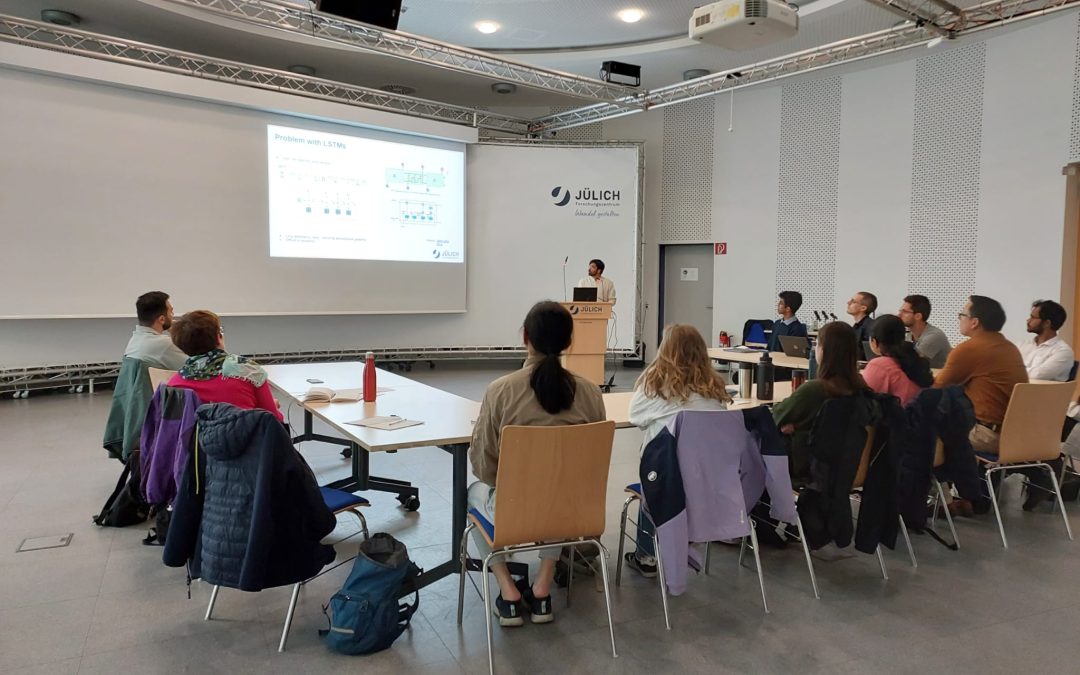On June 21st, 2024, CESOC and the EXPATS research group promoted the initiative “Machine Learning and Atmospheric Observation Day” at the Forschungszentrum Jülich (FZJ) in collaboration with the FZJ and the working group ExObs from the University of Cologne (UoC), and I was lucky enough to join the group. The goal was to bring students from CESOC and IDEA-S4S together to see the computational facilities and the JOYCE instrument supersite, two of the most advanced research infrastructures in our region.
After a few minutes walk across the large site of FZJ, we arrived at a lecture hall in the Jülich Supercomputing Center (JSC). The little group I was part of included the initial idea giver and junior research group leader Claudia Acquistapace, 11 early-career scientists, a mix of PhD and Master students, and me, Katja Sperveslage. In the lecture hall, Ankit Patnala gave a brief overview of the FZJ, telling us about the different departments and projects running at the moment. Then, together with Asma Semcheddine, they presented the topic of “AI in atmospheric sciences” in detail, with examples and nice visualizations. Everyone listened with interest and asked questions until their heads were spinning.

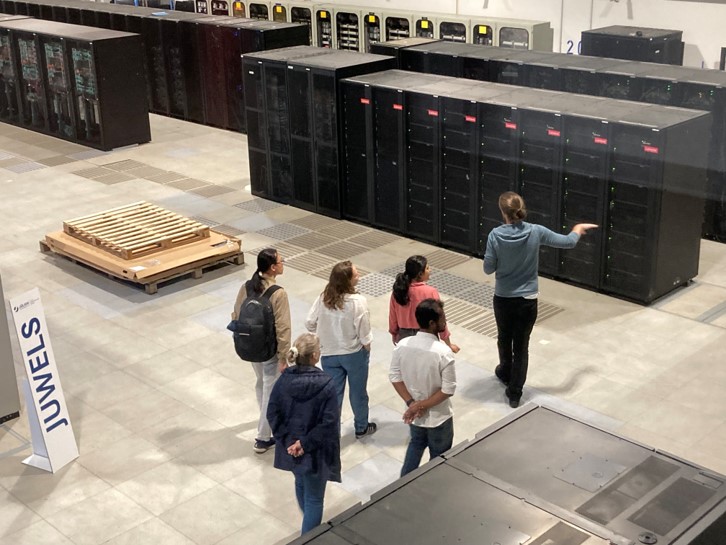
Over a delicious finger food lunch, we could get to know each other and took a first look through a large window at the high-performance computer (HPC): JUWELS – part of the JSC. We were then guided in two groups through the large hall by Benedikt von St. Vieth in which we could take a closer look at the very loud HPC JUWELS.
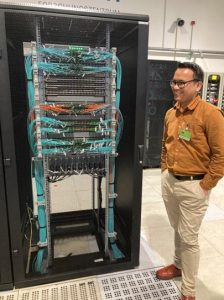
It’s impressive that so many black, flashing boxes can do so much. We were also allowed to take a closer look at the water cooling system in one of the units.
In a separate building, we listened to an explanatory lecture from Sebastian Schulz on the JUNIQ quantum computer, because you really can’t see what’s going on inside that black box!
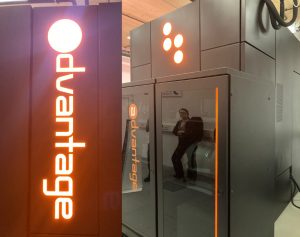
During the rain break, we all moved to the Institute of Climate and Energy Systems (IEK-8), where Dr. Bernhard Pospichal was already waiting for us. The meteorologist from the UoC’s Institute of Geophysics and Meteorology (part of the ExOb group) described all the measuring activities developed in Jülich with his overview on “JOYCE (Jülich ObservatorY for Cloud Evolution): Synergy of long-term ground-based remote sensing observations for studying atmospheric processes around clouds and precipitation”.
After the theoretical introduction of remote sensing observations from the ground, we had a look at the measuring instruments on the IEK’s roof: the JOYCE platform. There are many different instruments! The way to the roof and the small room where you could take a quick look at the raw data were also quite some experiences…
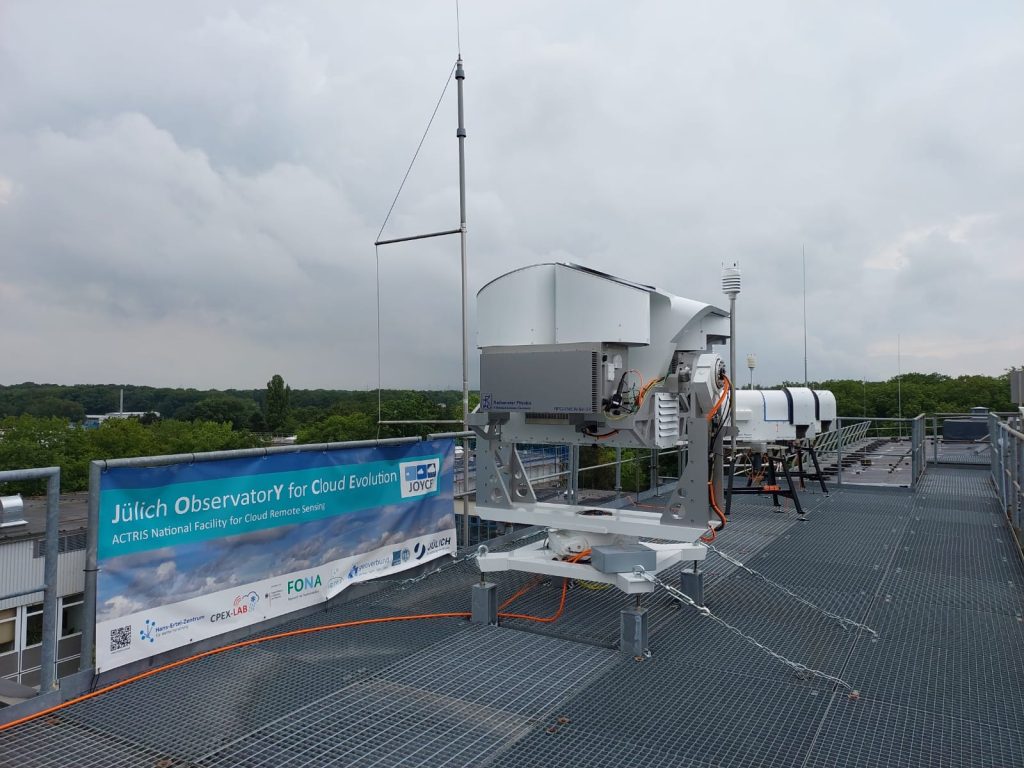
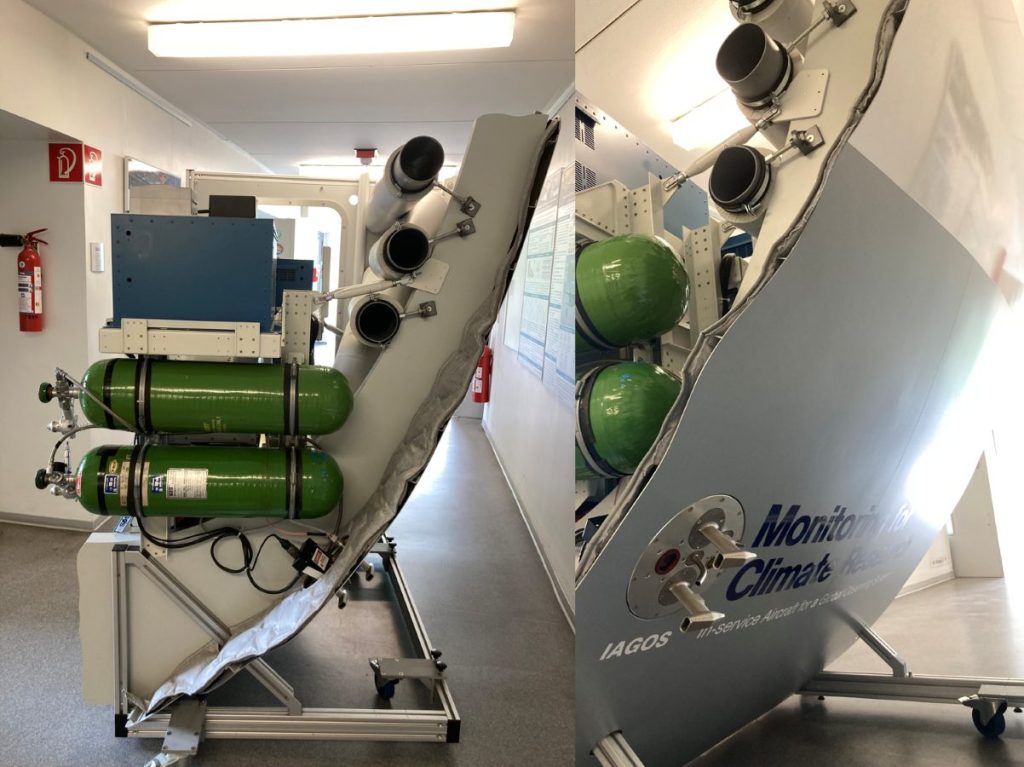
Afterward, we learned from Christoph Mahnke the very interesting details of the IAGOS (In-service Aircraft for a Global Observing System) project. Within IAGOS, boxes with instruments to measure trace gases and also cloud droplets (approx. 20*40*50cm in size) are installed in aircraft. However, they don’t use research aircraft, but commercial ones! This is quite a special thing and implies more efforts to organize the logistics and instrument maintenance in coordination with the air companies to carry this additional load on their scheduled flights. Some of these boxes and a small part of an aircraft containing this box were shown so that we got a good impression of this great project with challenging issues.
At last, we got the chance to see a small part of SAPHIR (Simulation of Atmospheric Photochemistry In a Large Reaction Chamber). In the huge chamber, experiments were running, and, of course, we weren’t allowed to interrupt them. Fortunately, we got an introduction outside from Thorsten Hohaus and took a view into a small chamber where plants can be “positioned” to study their reactions and stress under certain atmospheric conditions. The SAPHIR atmospheric simulation chamber enables reproducible investigations into precisely defined atmospheric-chemical mechanisms. In this way, the processes in the atmosphere can be reconstructed and analysed.
The students were also very happy: “It was very insightful to see where ML models are run and how you retrieve ground-based data for training and evaluating such models.” (Daniele Corradini, PhD at UoC)
We thank everyone for these interesting insights and the organization!
– a report from Katja Sperveslage1 and Claudia Acquistapace2, editor: Sybille Y. Scheele3
1coordinator of KPA imfess, UoC
2EXPATS junior research group leader
3CESOC Coordinator
Pictures ©Claudia Acquistapace and Katja Sperveslage, UoC

